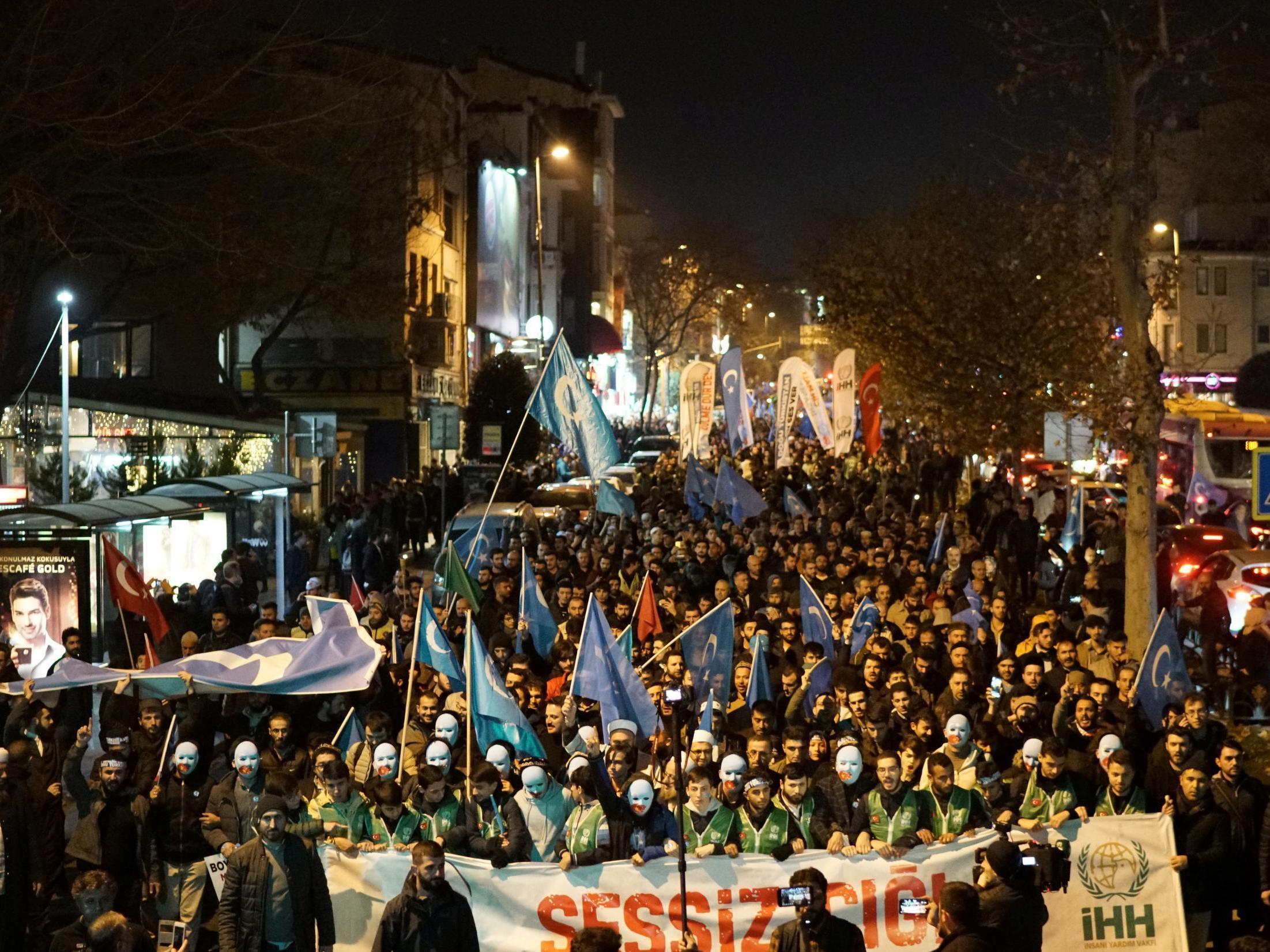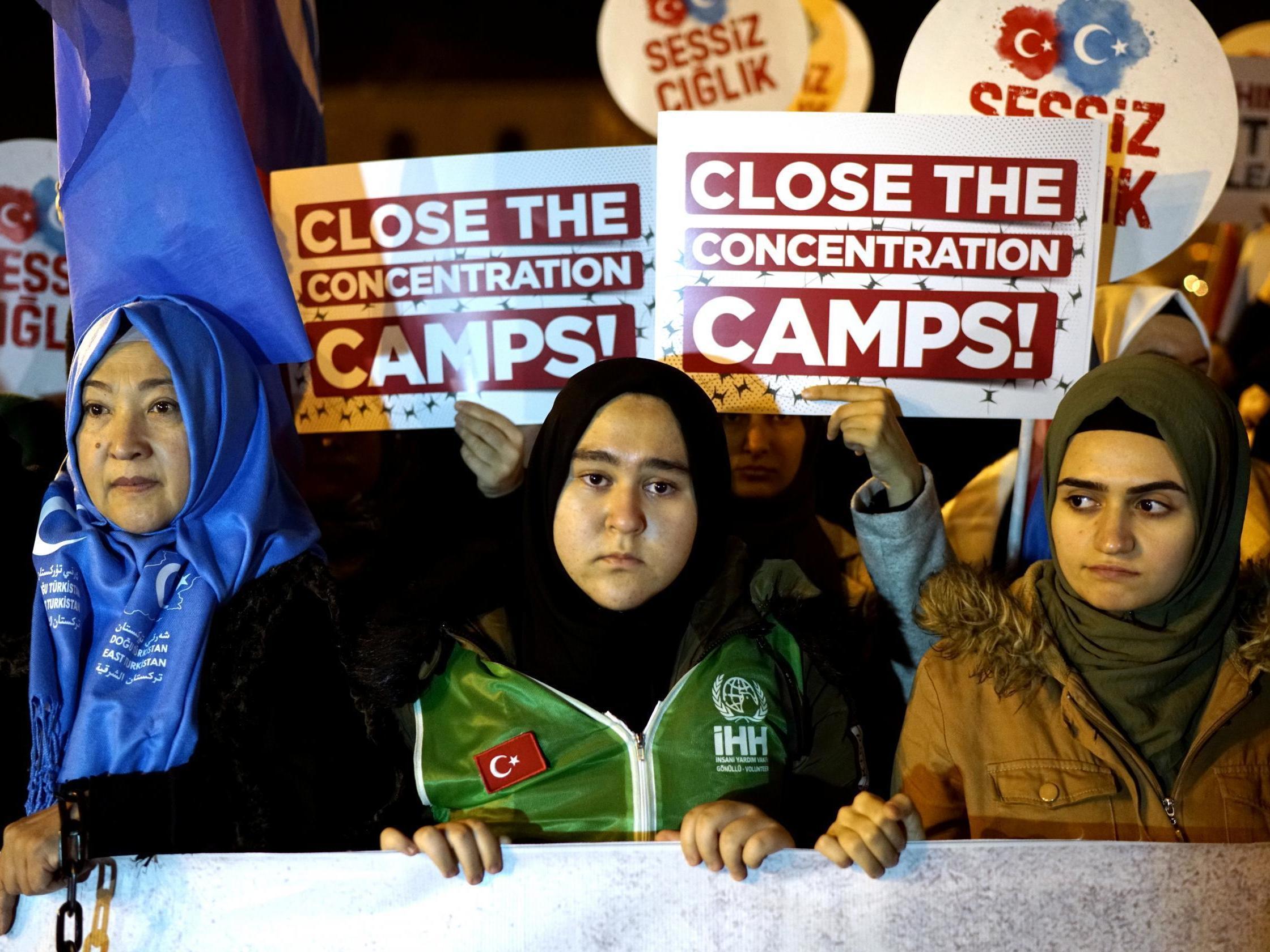Uighur town clings to its cultural past in spite of China’s efforts to extinguish it
Foreign journalists are now permitted to roam Yarkand’s streets
Your support helps us to tell the story
From reproductive rights to climate change to Big Tech, The Independent is on the ground when the story is developing. Whether it's investigating the financials of Elon Musk's pro-Trump PAC or producing our latest documentary, 'The A Word', which shines a light on the American women fighting for reproductive rights, we know how important it is to parse out the facts from the messaging.
At such a critical moment in US history, we need reporters on the ground. Your donation allows us to keep sending journalists to speak to both sides of the story.
The Independent is trusted by Americans across the entire political spectrum. And unlike many other quality news outlets, we choose not to lock Americans out of our reporting and analysis with paywalls. We believe quality journalism should be available to everyone, paid for by those who can afford it.
Your support makes all the difference.The winding, crowded lanes of old Yarkand, an ancient Silk Road town, preserve patterns of life that go back centuries.
Smoke wafts from sputtering grills of lamb and ovens lined with baking flatbread. Clangs ring from a coppersmith shaping bowls with a hammer. Twangs from a dutar, a two-stringed lute, float from a store selling traditional musical instruments. In a dimly lit teahouse, old men in Muslim head caps murmur in conversation.
Sitting on the fringe of the Taklamakan Desert, Yarkand remains a cultural cradle for Uighurs, a mostly Muslim minority in China’s far-western Xinjiang region. But their way of life is under intense pressure.
Uighurs have for three years endured a sweeping campaign to turn them into obedient followers of the Communist Party, to weaken their commitment to Islam and to shift them from farms to factories. Towns and cities across Xinjiang are surrounded by big police checkpoints that use facial recognition scanners to record people coming and going.
A million or more Uighurs have been sent to indoctrination camps since 2017. Yarkand was decimated by these detentions.
In 2018, this city of approximately 200,000 people was effectively closed off to foreign journalists, with police checkpoints blocking entry by car. Since last year, though, the authorities in Xinjiang have eased up enough that we are now allowed in.
Our visit reveals a town scarred by recent upheavals. Bulldozers encroach on houses in the old town, condemned as “slums”, to make way for new neighbourhoods. Yet the Uighurs there also appear resilient. They hold onto customs woven from their history as farmers, merchants and Muslims living on the edge of deserts.

We arrive in Yarkand by a morning train from Hotan, a small city 175 miles to the southeast. After some negotiations and hushed phone calls, a police officer and a propaganda official who has hurried to the station allow us to visit as long we agree to be on a train that night to Kashgar, the next city on our journey to see how the Xinjiang region is changing.
A brief taxi ride takes us to old Yarkand as stores and restaurants began to stir to life. We are watched constantly by plainclothes officers, and we limit conversations with residents to brief chats, for fear of bringing them trouble.
Yarkand still offers glimpses of its ancient splendours. The main lane in the old commercial area is dotted with the two-story homes of merchants, faded and cracked. Their wooden balustrades and plaster ceilings are decorated with swirling floral patterns, recalling Yarkand’s history as a stop on trade routes crisscrossing China, Central Asia and beyond.
Yarkand was the capital of an Islamic dynasty, the Yarkand Khanate, which lasted two centuries from 1514. Uighurs credit the Khanate with collecting and refining a revered set of musical performances, the Twelve Muqam. Tombs of the khans lie in a sprawling cemetery here.
On the chief shopping street, knots of women in bright dresses wander into shops selling children’s clothes or debate over sparkling trays of necklaces and rings at jewellery stalls. Portly stall holders lay out piles of dried dates and raisins, or sanzi, a snack of fried dough.
On this journey through southern Xinjiang, places we visited in the depths of the crackdown in 2017 and 2018 seem busier and more crowded now, suggesting that restrictions on residents have eased a bit.
Police checkpoints throughout towns and cities have become less stringent in the past year, and it is easier to move around. In the bazaars, more faces have the weather-hardened features of farmers, suggesting it is easier to travel from villages.
The reasons for these changes aren’t clear: officials will not offer explanations. The government may have felt more confident after detaining so many people. Or it may have felt it had to ease up a little because the restrictions were suffocating the local economy and tourism, and drawing international condemnation.
Even so, Yarkand remains girded by security. Protective metal grates encase many shops. Cooks’ cleavers are chained to benches, as police rules demand, to prevent potential stabbings.
The government hopes the security will bring back tourists, and Yarkand has converted a gracefully reconstructed palace of the khans into a gaudy attraction, which doubles as a film and television set.
“Chinese culture, Chinese expression,” says a sign at the entrance to the building. Inside, visitors are greeted by a billboard portrait of Xi Jinping, the Communist Party leader, waving against a background showing modern apartment buildings.
Some signs of change in Yarkand since the crackdown are subtle. In a dusty park, six barbers wield razors, scraping whiskers from men’s faces, occasionally grunting to a customer to stay still or tilt his head.
Not long ago, barbers were in less demand. Beginning in the 1990s, southern Xinjiang experienced an Islamic resurgence. Younger men wore Muslim skull caps and grew beards, while more women took to wearing the heavy headdresses and long dresses common in the Middle East to display their Islamic piety.
The government blamed this resurgence of religion for growing ethnic resistance and violence, including a clash in Yarkand in 2014, when Uighurs with axes and knives attacked a government office and police station and killed 37 people, according to government reports.
Now displays of Islamic faith have virtually all disappeared from Yarkand, and across all Xinjiang, in the wake of the mass detentions and a wave of prohibitions. Most women wear modest headscarves or none at all; only a few old men have beards. Mosques appear closed or largely empty, even at prayer times. Observing Ramadan is officially discouraged. When we stop outside the Juma Mosque, a man scurries out and shoos us away.
“Love the Party, Love the Country,” the banner above the entrance says. That message is repeated outside other Xinjiang mosques.

Not all traditions have disappeared.
Amid the rubble of a demolished lot, residents buy sheep for Eid al-Adha, the Festival of Sacrifice, called Corban by Uighurs. They stare intensely over the local variety of sheep with their extravagantly fat rumps and pry open their jaws to check their mouths. The sheep will be killed and shared for days of feasting.
Restaurants in old Yarkand are a hubbub of multigenerational families who gather around servings of noodles, samsa – baked pastry pockets of mince – and mutton soup. Signs on the restaurant walls repeat the government’s call for ethnic unity.
“All ethnic groups must bind together as tightly as pomegranate seeds,” says one sign seen in most stores.
In a basement-level cafe, Uighur women in their twenties in sunglasses, jeans and bright skirts chatter over sweet drinks. One woman sits beside a small, old man with a white beard, perhaps her grandfather, offering him spoonfuls of ice cream.
Members of China’s Han majority are an uncommon sight. Yarkand is over 90 per cent Uighur, although Chinese culture and language are spreading. A young girl passes by on the back of an electric cycle, clutching a textbook for learning Chinese - the language at school for Uighur children now.
As we walk around, we wonder if passersby might be former detainees of indoctrination camps or prisons. We watch young men become absorbed in a streetside lucky draw game, shouting or grimacing at the results. We can only guess how many more men would have been around before the wave of detentions.
Government records from six villages in rural areas of Yarkand in 2018 showed nearly 16 per cent of 3,249 adults listed were held in indoctrination camps, prisons or criminal detention centres, Adrian Zenz, a German researcher who has closely studied Xinjiang, says in a recent report.
Near the train station in Yarkand, one indoctrination camp appears empty; the usual cordon of guards has gone. The government says the camps across Xinjiang are shrinking. But other, bigger ones we try to visit across southern Xinjiang are still under heavy guard, suggesting they are in operation.
Old Yarkand may not survive much longer.
“Take reform all the way,” says a slogan painted on gutted homes waiting to be pulled down.
© New York Times

Join our commenting forum
Join thought-provoking conversations, follow other Independent readers and see their replies
Comments